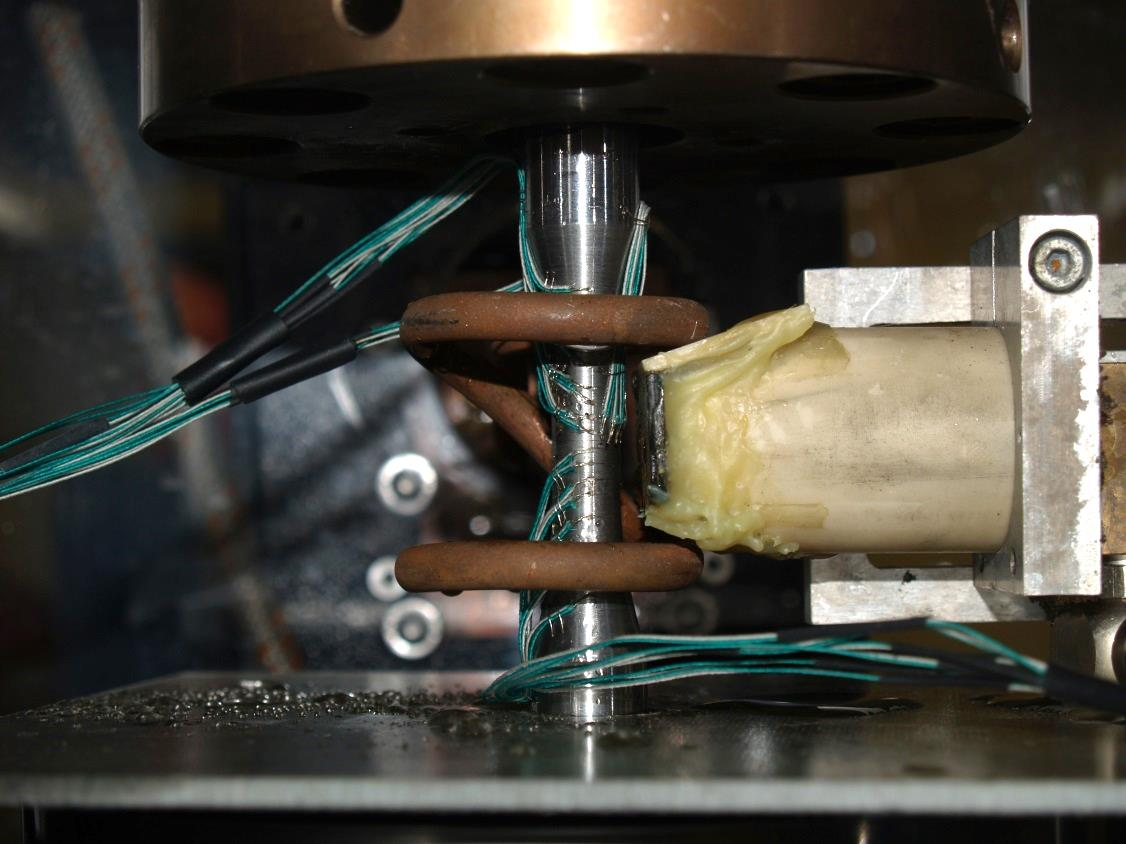Material characterization and lifetime assessment under TMF/TF load
Numerous high-temperature components are exposed to a complex thermal and mechanical load in operation, whereby the mechanical load is entirely or partly the result of thermally induced stresses caused by inhomogeneous temperature distribution in the component. If high temperature gradients occur very locally on the component surface, e.g. as a result of a flowing water vapor medium, the term thermal fatigue (TF) or »thermal shock load« is used. This frequently leads to a multitude of small cracks in the volume area close to the surface with no detectable orientation regarding the direction of the load or a random crack network, which is frequently referred to as a »crow’s foot« or »elephant skin«.
Through frequent start-up and shut-down of the plant, components are also exposed to a thermo-mechanical fatigue load (TMF), which normally leads to significantly longer cracks also coming from the surface and can cause failure of the components when the cracks reach a critical length. It can be assumed in this context that the cracks resulting from thermal shock and TMF load affect one another or thermal shock cracks can grow further as a result of TMF load.
Material models were recently developed at the Fraunhofer IWM for quantitative calculation and prediction of the lifetime under TMF/TF load, which are able to describe the development of damage resulting from overlapping thermo-mechanical and thermal fatigue load (from micro-crack development to macro-crack propagation). Furthermore, a test bench has been developed with which an overlapping thermo-mechanical (TMF) and thermal (TF) fatigue load can be applied to laboratory samples for the first time. In initial studies of typical power plant materials, a (partly significant) reduction in the overall lifetime is evident from TF overlapping. The fractographic studies show a similar character to the damage pattern for real components, so that it an be assumed that the damage mechanism can be mapped in a realistic way.
Back to Assessment of Materials and Lifetime Concepts Highlights
 Fraunhofer Institute for Mechanics of Materials IWM
Fraunhofer Institute for Mechanics of Materials IWM